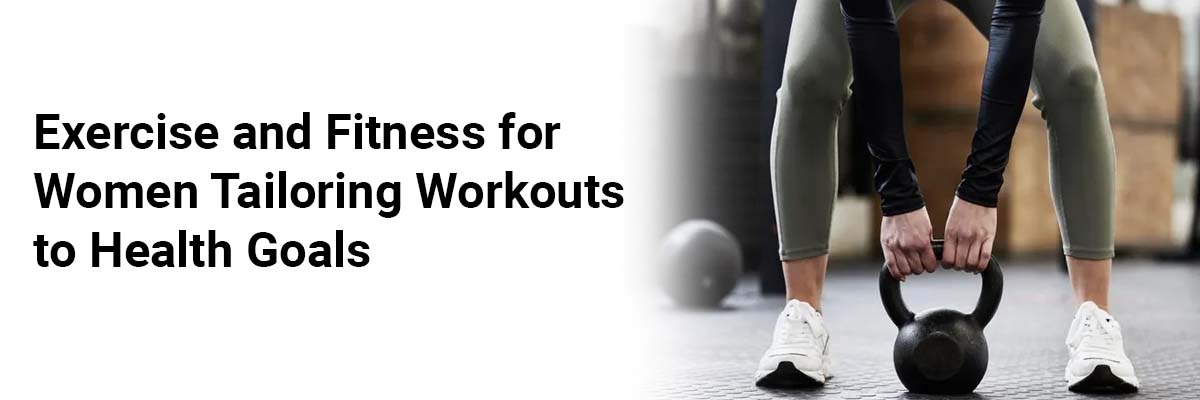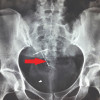
 IJCP Editorial Team
IJCP Editorial Team
Exercise and Fitness for Women: Tailoring Workouts to Health Goals
Though being physically active
and regular exercising are the pillars of good health, most females don’t do
enough physical activity. Clinical statistics reveal that one in five females
does no physical activity in a typical week, which makes them prone to various
diseases and medical conditions leading to chronic clinical adversities.
Physical activity plays a fundamental role in maintaining overall well-being and has numerous benefits for physical and mental health. Whether it's through structured exercise routines, recreational activities, or simply staying active throughout the day, prioritizing physical activity can have far-reaching benefits for both body and mind.
Regular exercising helps to:
- strengthen muscles and bones
- improve cardiovascular health
- enhance flexibility and mobility
- maintain your vitals, such as cholesterol, blood sugar,
and blood pressure
- manage your body weight by burning calories and
increasing your metabolism
- reduce the risk of chronic diseases
Not only in men, exercise and fitness play crucial roles in
promoting health and well-being for women of all ages. It helps manage stress,
anxiety, and depression levels, thus enhancing psychological well-being. This
holds significant relevance for women, who exhibit a higher incidence of
depression compared to men across developed and developing nations. Additionally,
engaging in physical activity fosters self-esteem, confidence, and social
integration, offering women a platform for equality in society.
Though clinical research has proven that women can achieve similar health benefits as men in a shorter span of time, still physical inactivity is more prevalent among women compared to men. The reason lies in the fact that women encounter various barriers to engaging in physical exercise, including family responsibilities, cultural beliefs, and the necessity of permission from household authorities to participate. Other common exercise barriers for women include:
- Lack of time and motivation
- Financial constraints
- Parenting demands
- Education and awareness level
- Lack of Resources
- Gender stereotyping
- Health conditions
Starting Fitness for Women:
A fitness journey begins with setting realistic goals, identifying personal preferences, and creating a structured plan. Women can start by assessing their current fitness level, establishing specific goals, and determining the type of exercise they enjoy. Starting gradually and progressing slowly is essential to avoid injury and burnout. Incorporating activities that fit into daily life, such as taking the stairs, walking or biking to work, or doing household chores, can help increase overall activity levels. Additionally, seeking support from friends, family, or a certified fitness professional can provide accountability and motivation.
Women's Workout Guidelines
According to CDC Guidelines, women should adhere to 150 minutes of moderate-intensity activity or 75 minutes of vigorous activity weekly, supplemented with two days of muscle-strengthening exercises. Consistently repeating the same routine can plateau progress, so it's essential to diversify workouts with age-appropriate aerobic, strength, and flexibility exercises.
- Moderate activities encompass brisk walking, cycling,
dancing, hiking, rollerblading, and water aerobics.
- Vigorous exercises induce heavy breathing and minimal
talking, including swimming, running, cycling uphill, stair climbing,
skipping, and aerobics.
- Muscle-strengthening routines should target major
muscle groups — arms, legs, hips, shoulders, back, chest, and abdomen.
Aims for Workouts for Women:
Depending on the current fitness level and age, the workout plans for women must tailored to achieve:
- In your 20s, prioritize building
strong bones through weight-bearing activities like weight-lifting,
hiking, tennis, stair climbing, and high-impact sports.
- In your 30s, focus on
cardiovascular health to maintain ideal body weight and heart and lung
health.
- In your 40s, combat age-related
muscle loss with regular resistance training exercises targeting all
muscle groups at least two to three times a week.
- In your 50s, stay active to
manage menopausal changes and maintain overall health.
- In your 60s, prioritize
activities that enhance balance, coordination, muscular strength, and gait
to support independent living and prevent falls.
- During Pregnancy and the postpartum period, aim for 150 minutes of
moderate physical activity a week. It helps prevent excessive weight gain,
gestational diabetes risk, and postpartum depression.
Best Workout Routine for Women:
The optimal workout routine for women integrates cardiovascular exercise, strength training, flexibility exercises, and functional movements.
- Cardio activities like brisk walking, jogging, cycling,
or swimming enhance heart health, calorie burn, and endurance.
- Strength training, whether with weights or bodyweight
exercises such as squats, lunges, and push-ups, boosts muscle strength,
metabolism, and bone density.
- Flexibility exercises like yoga or Pilates enhance
flexibility, mobility, and posture, reducing injury risks.
- Balancing activities like walking backward, using a
wobbleboard, and standing on one leg help strengthen the muscles of your
back, abdomen, and legs, thus enhancing your body's ability to resist
falling when moving or at rest.
Women should choose enjoyable options for physical activities
that fit their lifestyles. Besides gym workouts, activities like dancing,
hiking, gardening, or sports offer effective and enjoyable ways to stay active.
Group fitness classes like Zumba or aerobics provide social support and
motivation. Outdoor activities such as hiking or cycling allow for exercise in
natural settings.
Essential Tips for Effective Exercising:
- Allow at least two hours after eating before engaging
in vigorous exercise.
- Exercise when feeling well to ensure maximum
performance.
- Stay hydrated by drinking plenty of fluids before and
after your workout.
- Wear loose, comfortable clothing for ease of movement
and invest in supportive footwear.
- Set realistic and safe fitness goals to avoid
overexertion.
- Avoid outdoor exercise during extreme weather
conditions.
- Stop exercising immediately if you experience chest
pain, dizziness, palpitations, or excessive shortness of breath.
- Exercise with a friend for added motivation and safety.
- Choose an exercise regimen, instructor, or program that
you enjoy to make workouts more enjoyable.
- Older individuals, particularly those with a sedentary
lifestyle, should consult their doctors before starting a vigorous
exercise routine. Additional testing, like a stress test, may be
necessary.
- Regardless of exercise duration or intensity, always
incorporate a warm-up and cool-down period to minimize the risk of injury.
·
Consultation with a healthcare professional or certified fitness
trainer can provide personalized guidance and support on the journey to a
healthier, fitter lifestyle.
Conclusion:
To maintain health and fitness, women should prioritize regular exercise, balanced nutrition, adequate sleep, stress management, and self-care. Consistency is key, so establishing a workout routine and sticking to it is essential for long-term success. Incorporating various physical activities, including cardio, strength training, flexibility exercises, and recreational activities, ensures a well-rounded fitness regimen. Additionally, listening to the body's cues, avoiding overtraining, and allowing for rest and recovery is vital for preventing burnout and injuries.
References:
• WebMD. Workout Plans for Women: What to Know. Available from: https://www.webmd.com/fitness-exercise/workout-plans-for-women-what-to-know
• Office on Women's Health, U.S. Department of Health & Human Services. Physical Activity for All Women. Available from: https://www.womenshealth.gov/getting-active/physical-activity-all-women
• Physiopedia. Physical Activity and Women. Available from: https://www.physio-pedia.com/Physical_Activity_and_Women
• National Heart, Lung, and Blood Institute (NHLBI). Women May Realize Health Benefits of Regular Exercise More Than Men. Available from: https://www.nhlbi.nih.gov/news/2024/women-may-realize-health-benefits-regular-exercise-more-men
• Speaking of Women's Health. Exercise Guidelines for Women. Available from: https://speakingofwomenshealth.com/health-library/exercise-guidelines-for-women

IJCP Editorial Team
Comprising seasoned professionals and experts from the medical field, the IJCP editorial team is dedicated to delivering timely and accurate content and thriving to provide attention-grabbing information for the readers. What sets them apart are their diverse expertise, spanning academia, research, and clinical practice, and their dedication to upholding the highest standards of quality and integrity. With a wealth of experience and a commitment to excellence, the IJCP editorial team strives to provide valuable perspectives, the latest trends, and in-depth analyses across various medical domains, all in a way that keeps you interested and engaged.














Please login to comment on this article